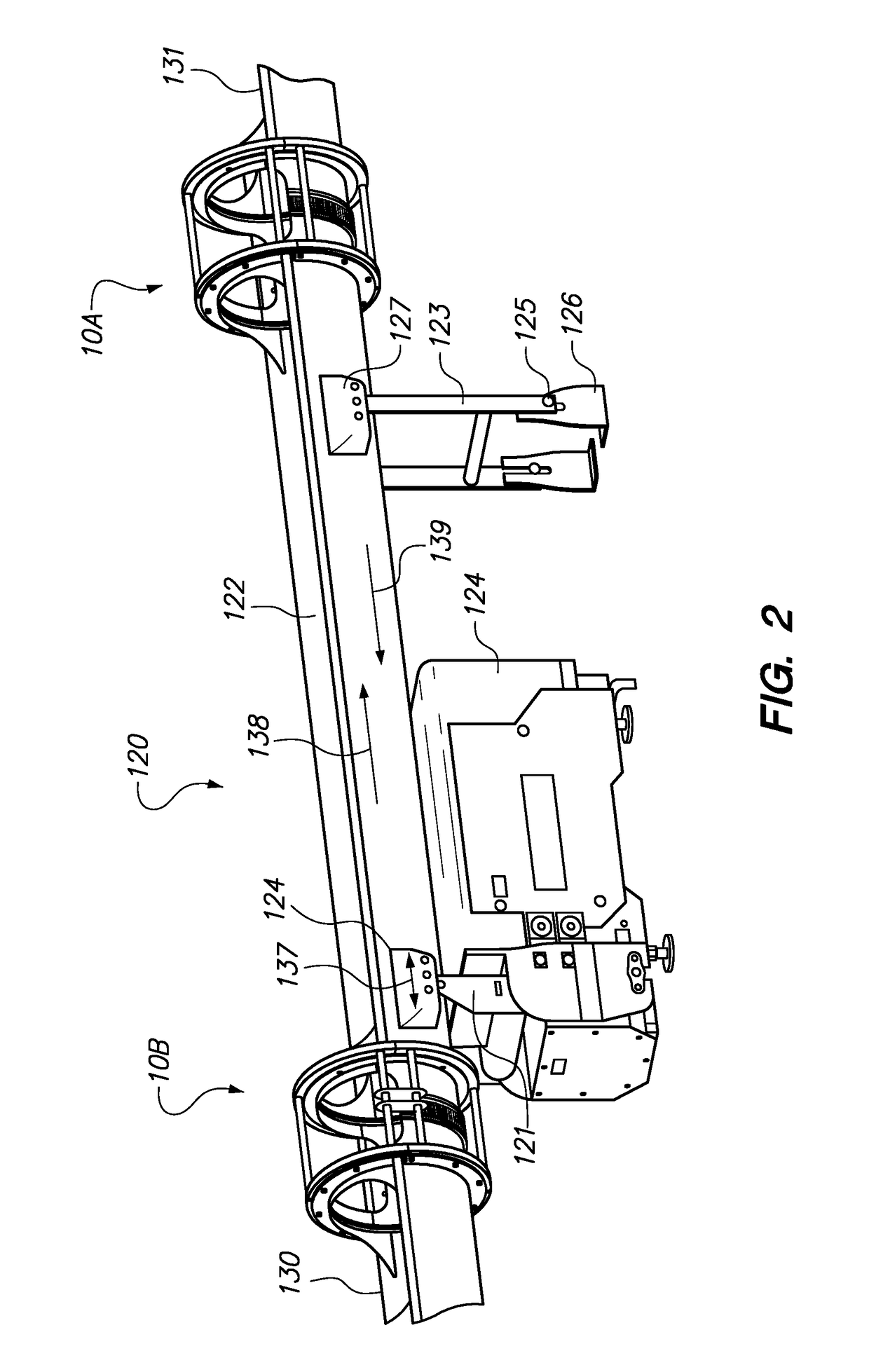Method of controlling a rate at which an upstream process feeds a conditioned product to a downstream process
a technology of conditioned products and downstream processes, which is applied in the direction of continuous material flow weighing apparatus, packaging, instruments, etc., can solve the problems of loss of quality control of conditioned products produced by upstream processes, difficult to precisely match the throughput rate of two independently operated and sequential processes, and affect the quality of the portion of the product stream. , to achieve the effect of maximizing the efficiency of product processing operation and minimizing frequency and duration of inactivity
- Summary
- Abstract
- Description
- Claims
- Application Information
AI Technical Summary
Benefits of technology
Problems solved by technology
Method used
Image
Examples
Embodiment Construction
[0054]Embodiments of the control method of the present invention provide for controlling the rate at which a stream of product is fed to an upstream process that conditions the stream of product and delivers a stream of conditioned product to a downstream process. A specific embodiment of the control method of the present invention provides for controlling the rate at which unseasoned (or raw) product is discharged from a distribution conveyor to a seasoning system (upstream process) that delivers a stream of seasoned product to a weighing and bagging machine (downstream process). Embodiments of the control method of the present invention use an input signal that is independent of and unaffected by equipment fouling such as, for example, seasoning build-up or accumulation on a dispersion surface that feeds product conditioned in the upstream process to a downstream process such as, for example, a weighing and bagging machine. Embodiments of the control method of the present inventio...
PUM
 Login to View More
Login to View More Abstract
Description
Claims
Application Information
 Login to View More
Login to View More - R&D
- Intellectual Property
- Life Sciences
- Materials
- Tech Scout
- Unparalleled Data Quality
- Higher Quality Content
- 60% Fewer Hallucinations
Browse by: Latest US Patents, China's latest patents, Technical Efficacy Thesaurus, Application Domain, Technology Topic, Popular Technical Reports.
© 2025 PatSnap. All rights reserved.Legal|Privacy policy|Modern Slavery Act Transparency Statement|Sitemap|About US| Contact US: help@patsnap.com



